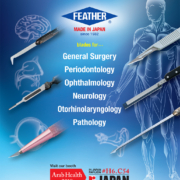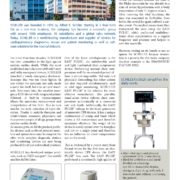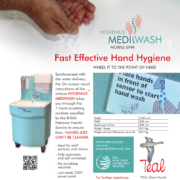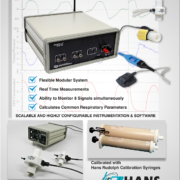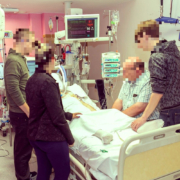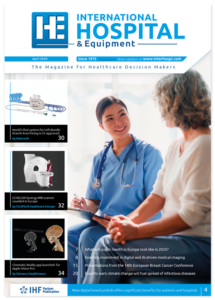Visiting hours for hospitalized patients have traditionally been restricted to set periods during the day and limited in duration. However, the situation is slowly changing towards a more open approach to family visits, even in wards where visits are often most restricted, such as intensive care units (ICUs). As just a few examples of this general change in attitudes towards visiting, many American hospitals have now completely removed restricted visiting hours; a campaign of extended visiting hours was launched in France a few months ago; and a bill is currently being discussed in Italy to expand hospital visits.
by Prof Jean-Louis Vincent
Why restrict hospital visiting?
The reasons behind restrictive visiting are not very clear or, in today’s context, very credible. The fear of transmission of infection was perhaps the earliest reason for restricting visits, but with improved infection control measures, this concern is generally unfounded. Other suggested reasons include the need for patient to have adequate rest periods and the belief that visitors interfere negatively with medical and nursing care.
Because sick patients need rest?
It was widely believed that having periods of the day without visiting would ensure that patients had sufficient periods of rest, without disturbance from visitors. However, the need for sick patients to rest is often exaggerated. Indeed, this idea is now rather out-of-date, even for the sickest of patients. Although patients must clearly not be exhausted by their visitors, too much rest can encourage muscle weakness and prolong convalescence. When a family member says “doesn’t he/she need to rest Doctor?”, I often reply “certainly not; in fact you should wake him/her up!”. The current trend is to encourage physical and intellectual stimulation for all patients.
Of course patients need some time to sleep and rest, as we all do, but this can be determined on an individual basis, preferably after discussion with the patient, rather than being enforced at fixed times by restricted visiting hours. Moreover, the presence of a loved one in the room does not necessarily prevent restorative sleep. Rest is also important for family members and it is sometimes necessary to remind them to take a break, particularly at night. In any case, access to hospitals is generally limited during the night, for security reasons.
Because visitors interfere with patient care?
The presence of visitors was often believed to interfere negatively with medical care. Visiting hours were therefore concentrated on periods of the day during which patients were least likely to be undergoing medical consults or examinations. However, hospitals of today function almost continuously or at least with considerably more extensive hours than in the past, notably for laboratory and radiological investigations, making it difficult to predict when examinations and rounds are most likely to take place.
The presence of visitors was also often believed to hinder good nursing care, and perhaps much restricted visiting was devised for the benefit of nurses, rather than the patient. Nurses often complained that they were unable to perform the necessary care in the best possible way, because they were bothered by the presence of relatives, sometimes numerous and noisy, who asked a lot of questions, and were even critical of the care being provided!
However, it is now widely believed that extended visiting hours can be beneficial not only for the patient and visitors, but also for the staff. Staff members, especially nurses, are often initially reluctant to the proposed change to more extensive or unlimited visiting, concerned that it will increase their workload. But this is not necessarily true, and is in fact often the reverse. Allowing visitors to be present at different times during the day enables them to understand better the work of the nurses, doctors and other healthcare personnel. When visiting hours are restricted, nurses often make use of the visiting periods to have a small break, to catch up or even have a joke with their colleagues. This can sometimes give visitors the impression that nurses have nothing to do, or are not really concerned about looking after the patients under their care. By arriving at different times of the day and staying for longer periods, family members can better appreciate hospital life and realize that nurses also need some time for relaxation and distraction, thus reducing the risk of conflicts between family members and staff. Extending visiting hours also reduces the number of telephone calls from relatives asking after their loved one, thus freeing up nursing time.
Let’s welcome visitors
Importantly, fixed visiting hours can discourage relatives from visiting a patient. For example, it can be difficult for family members who are working to request time off during the day to be able to observe the fixed visiting hours; sometimes family members simply forget (or are unaware of) the specified times, especially when units have different hours on different days of the week, and have to go home having missed the allocated slot; similarly, visitors who have to travel some distance to visit their loved one may be put off by the risk of being late and missing the fixed visiting period. Finally it is sometimes just easier to say, “I’ll visit when they’re better and out of hospital…”
Rather than being made to feel that they are the enemy and not welcome, relatives should be encouraged to visit and be involved. We must not talk about “them” and “us”. The patient must be at the centre of our preoccupations at all times and we must all work together to ensure he/she has the best possible chances of a good recovery without complications. Family members and loved ones form part of the patient’s immediate supportive environment and can form a useful bridge between the patient and hospital staff. They can also play an active role in patient surveillance, for example by indicating to staff if there is a problem that has not been noticed or that the patient may not want to report. In certain American hospitals, pamphlets are now available to explain how relatives can identify and report important signs of deterioration, for example, confusion that wasn’t there before or a small change in respiration that has gone unnoticed.
Family members can even sometimes contribute directly to some aspects of patient care, for example helping with feeding, washing or dressing. Indeed, these practices are commonplace in countries with limited resources, where family members never leave the bedside. In western society, however, patient care has been completely transferred from the family to professional carers, which can sometimes lead to the patient feeling patronized or being treated like a child.
The hospital structure is also changing to be more welcoming for visitors. Instead of a few folding seats at the end of the corridor for relatives waiting while the patient is examined or comes back from an examination, many hospitals have now introduced reception rooms where relatives can stay as long as they wish, in comfortable conditions. In the United States in particular, hospitals have set up small kitchen-lounges where families can rest, prepare a meal in the microwave or watch television… and why not socialize, chat, share experiences with relatives of other patients.
Indeed, the hospital is no longer a detached world, which we are somewhat hesitant or even scared to enter. Hospitals are increasingly user friendly and should be seen as somewhere positive and welcoming. After all, many hospitals now have a cafeteria (if not a restaurant), small shops, a bank, a post-office, pleasant gardens… creating the idea that hospitals can be part of everyday life, and indeed are for the many patients and visitors that pass through the doors daily. Visitors can make use of these areas when their relative is undergoing an examination or receiving nursing care.
Family presence during interventions?
As families spend more time visiting their loved ones in hospital, the chances that they will be present when an intervention is needed are increasing, perhaps particularly on high acuity wards. But should they be allowed to stay in the room? Perhaps yes for a simple blood test or changing of a dressing, but what about during cardiopulmonary resuscitation (CPR)? This issue continues to raise considerable debate, not least because the patient needing CPR cannot be asked if they mind. Although some staff members find having family members present adds stress to an already complex situation, studies have suggested that the presence of a relative can help a surviving patient understand what has happened and, if the patient dies, having been present can reassure the family member that everything possible was done. This is an area where attitudes are changing and, if a family member wishes to be present during CPR, this request should not be refused.
The rights and responsibilities of visitors ….
Clearly, although visitors have the right to see their loved ones in hospital, they must also abide by certain rules. They must leave the room when asked to do so by the hospital staff and should not interfere with patient care. They should not slow the work of the nursing or medical staff by asking repetitive, unnecessary questions or by engaging in prolonged conversation. Importantly, too, visitors are there to visit only their relative/loved one and must not look, even surreptitiously, into the rooms of other patients!
… and the rights of the patient
On reflection, rather than asking whether visiting the sick patient is allowed, the question should rather be the reverse, whether the patient is allowed to see his/her relatives? Limiting hospital visits is generally harmful for the patient and opening up visiting is reported to improve patient satisfaction. By bringing news from the outside world, family, friends, pets, … visitors can stimulate a patient’s intellect and interest, helping promote a quick recovery. There is nothing worse than lying in bed all day just looking at the ceiling… But, it is important to consider the patient’s viewpoint when considering visitor access. For example, some patients may prefer to have only close family members visit, feeling embarrassed about less well-known friends and relatives seeing them unwell, and others may prefer not to discuss their condition when family members are present for fear of upsetting them. Patients have the right to see visitors whenever they wish, but should not have visiting forced upon them.
Conclusion
It is not so long ago that, when visiting a patient in hospital, an often rather officious nurse would announce the end of visiting hours and insist you leave your loved one. Such strict practices have become less common and there is much more flexibility, particularly on general hospital wards. We need to go further and extend open visiting to all areas of the hospital, including ICUs, where visiting still remains, in general, more restricted. In many cases, we should be actively inviting relatives to visit more and to stay longer, especially when the patient has few visitors and feels isolated. Visiting is humane and good for the patient.
If you still have restricted visiting hours at your hospital, I am sure this will change in the near future. I am not convinced that there should be a law on this subject, whether in Belgium, Italy or elsewhere, but rather a collective effort needs to be made to change our mentality related to visiting hours and thus improve the quality of care for our patients.
Suggested reading
Giannini A, et al. What’s new in ICU visiting policies: can we continue to keep the doors closed? Intensive Care Med 2014; 40: 730-33
Jabre P, et al. Family presence during cardiopulmonary resuscitation. N Engl J Med 2013; 368: 1008–18.
McAdam JL & Puntillo KA. Open visitation policies and practices in US ICUs: can we ever get there? Crit Care 2013; 17: 171
Shulkin D, et al. Eliminating visiting hour restrictions in hospitals. J Healthc Qual 2014; 36: 54-7
The author
Jean-Louis Vincent, MD, PhD
Dept of Intensive Care, Erasme University Hospital, Université libre de Bruxelles,
Route de Lennik 808, 1070 Brussels,
Belgium
jlvincent@intensive.org


